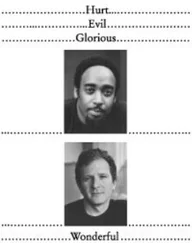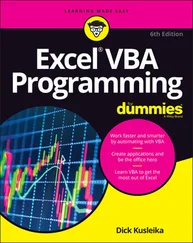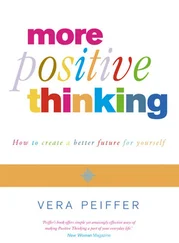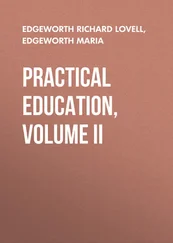Nothing will give you more peace of mind than thoroughly tested code. If it’s been a hassle for you in the past, use an automated framework, such as the one we’ve presented here, to integrate routine testing into your daily work. You (and your users!) will be glad you did.
1. Write a test program using the TestSuiteFramework for the standard vector class that thoroughly tests the following member functions with a vector of integers: push_back( )(appends an element to the end of the vector), front( )(returns the first element in the vector), back( )(returns the last element in the vector), pop_back( )(removes the last element without returning it), at( )(returns the element in a specified index position), and size( )(returns the number of elements). Be sure to verify that vector::at( )throws a std::out_of_rangeexception if the supplied index is out of range.
14. Suppose you are asked to develop a class named Rationalthat supports rational numbers (fractions). The fraction in a Rationalobject should always be stored in lowest terms, and a denominator of zero is an error. Here is a sample interface for such a Rationalclass:
class Rational {
public:
Rational(int numerator = 0, int denominator = 1);
Rational operator-() const;
friend Rational operator+(const Rational&,
const Rational&);
friend Rational operator-(const Rational&,
const Rational&);
friend Rational operator*(const Rational&,
const Rational&);
friend Rational operator/(const Rational&,
const Rational&);
friend ostream& operator<<(ostream&,
const Rational&);
friend istream& operator>>(istream&, Rational&);
Rational& operator+=(const Rational&);
Rational& operator-=(const Rational&);
Rational& operator*=(const Rational&);
Rational& operator/=(const Rational&);
friend bool operator<(const Rational&,
const Rational&);
friend bool operator>(const Rational&,
const Rational&);
friend bool operator<=(const Rational&,
const Rational&);
friend bool operator>=(const Rational&,
const Rational&);
friend bool operator==(const Rational&,
const Rational&);
friend bool operator!=(const Rational&,
const Rational&);
};
Write a complete specification for this class, including pre-conditions, post-conditions, and exception specifications.
15. Write a test using the TestSuiteframework that thoroughly tests all the specifications from the previous exercise, including testing exceptions.
16. Implement the Rationalclass so that all the tests from the previous exercise pass. Use assertions only for invariants.
17. The file BuggedSearch.cppbelow contains a binary search function that searches the range [beg, end)for what. There are some bugs in the algorithm. Use the trace techniques from this chapter to debug the search function.
// BuggedSearch.cpp
#include "../TestSuite/Test.h"
#include
#include
#include
#include
using namespace std;
// This function is only one with bugs
int* binarySearch(int* beg, int* end, int what) {
while(end - beg != 1) {
if(*beg == what) return beg;
int mid = (end - beg) / 2;
if(what <= beg[mid]) end = beg + mid;
else beg = beg + mid;
}
return 0;
}
class BinarySearchTest : public TestSuite::Test {
enum { sz = 10 };
int* data;
int max; //Track largest number
int current; // Current non-contained number
// Used in notContained()
// Find the next number not contained in the array
int notContained() {
while(data[current] + 1 == data[current + 1])
current++;
if(current >= sz) return max + 1;
int retValue = data[current++] + 1;
return retValue;
}
void setData() {
data = new int[sz];
assert(!max);
// Input values with increments of one. Leave
// out some values on both odd and even indexes.
for(int i = 0; i < sz;
rand() % 2 == 0 ? max += 1 : max += 2)
data[i++] = max;
}
void testInBound() {
// Test locations both odd and even
// not contained and contained
for(int i = sz; --i >=0;)
test_(binarySearch(data, data + sz, data[i]));
for(int i = notContained(); i < max;
i = notContained())
test_(!binarySearch(data, data + sz, i));
}
void testOutBounds() {
// Test lower values
for(int i = data[0]; --i > data[0] - 100;)
test_(!binarySearch(data, data + sz, i));
// Test higher values
for(int i = data[sz - 1];
++i < data[sz -1] + 100;)
test_(!binarySearch(data, data + sz, i));
}
public:
BinarySearchTest() {
max = current = 0;
}
void run() {
srand(time(0));
setData();
testInBound();
testOutBounds();
delete [] data;
}
};
int main() {
BinarySearchTest t;
t.run();
return t.report();
}
Part 2.The Standard C++ Library
Standard C++ not only incorporates all the Standard C libraries (with small additions and changes to support type safety), it also adds libraries of its own. These libraries are far more powerful than those in Standard C; the leverage you get from them is analogous to the leverage you get from changing from C to C++.
This part of the book gives you an in-depth introduction to key portions of the Standard C++ library .
The most complete and also the most obscure reference to the full libraries is the Standard itself. Bjarne Stroustrup’s The C++ Programming Language, Third Edition (Addison-Wesley, 2000) remains a reliable reference for both the language and the library. The most celebrated library-only reference is The C++ Standard Library: A Tutorial and Reference , by Nicolai Josuttis (Addison-Wesley, 1999). The goal of the chapters in this part of the book is to provide you with an encyclopedia of descriptions and examples so that you’ll have a good starting point for solving any problem that requires the use of the Standard libraries. However, some techniques and topics are rarely used and are not covered here. If you can’t find it in these chapters, reach for the other two books; this book is not intended to replace those books but rather to complement them. In particular, we hope that after going through the material in the following chapters you’ll have a much easier time understanding those books .
You will notice that these chapters do not contain exhaustive documentation describing every function and class in the Standard C++ library. We’ve left the full descriptions to others; in particular to P.J. Plauger’s Dinkumware C/C++ Library Reference at http://www.dinkumware.com. This is an excellent online source of standard library documentation in HTML format that you can keep resident on your computer and view with a Web browser whenever you need to look up something. . You can view this online and purchase it for local viewing. It contains complete reference pages for the both the C and C++ libraries (so it’s good to use for all your Standard C/C++ programming questions). Electronic documentation is effective not only because you can always have it with you, but also because you can do an electronic search for what you want .
When you’re actively programming, these resources should adequately satisfy your reference needs (and you can use them to look up anything in this chapter that isn’t clear to you). Appendix A lists additional references .
Читать дальше












